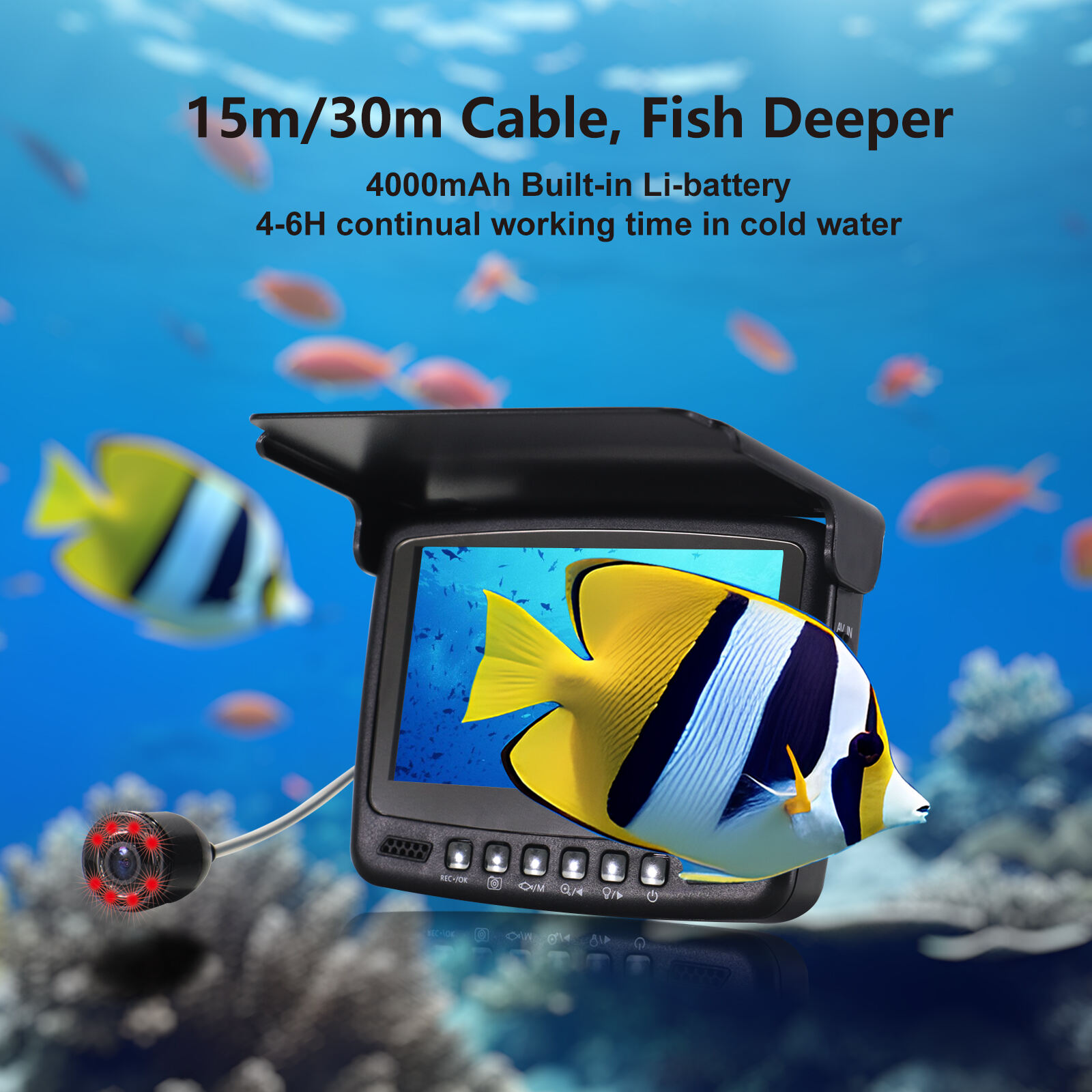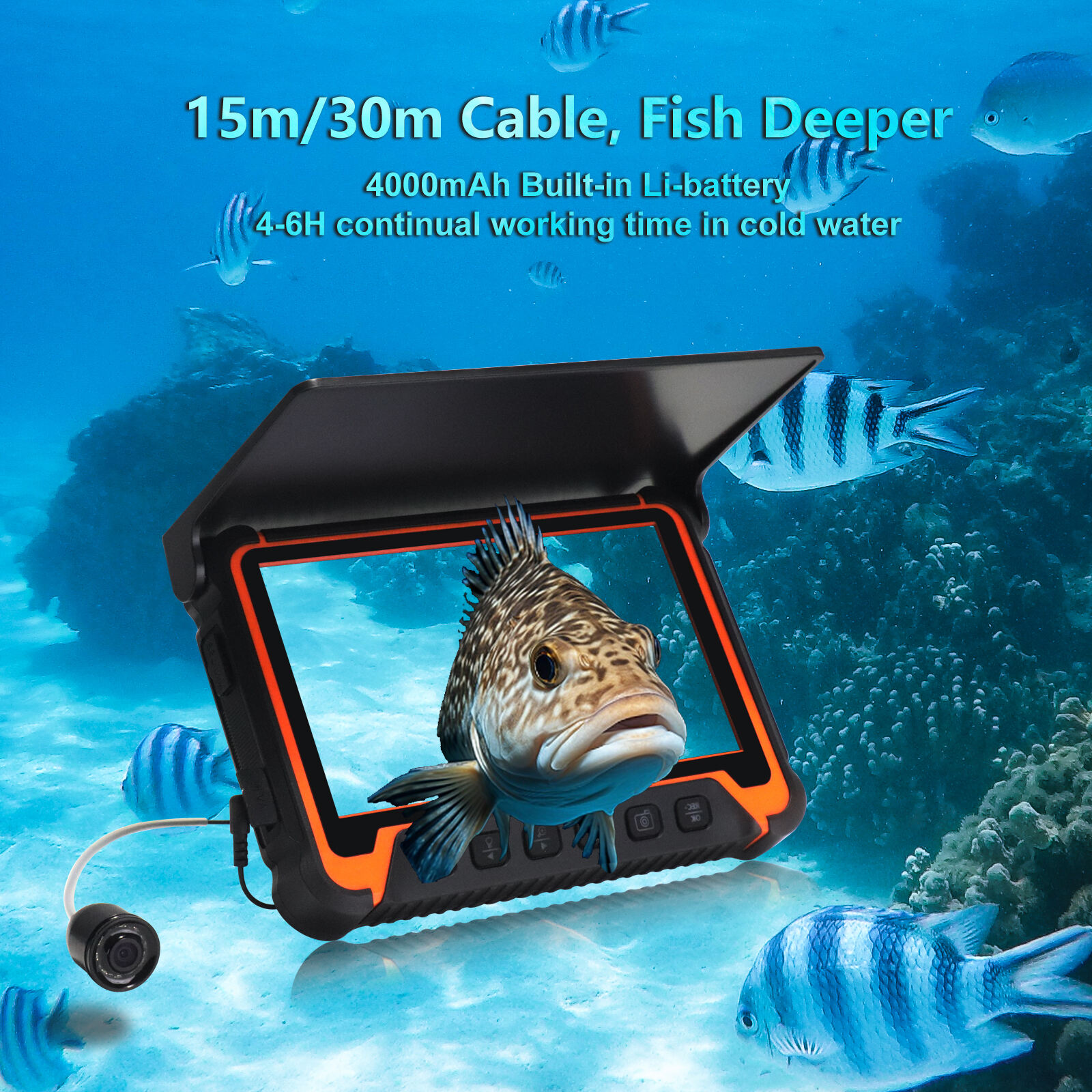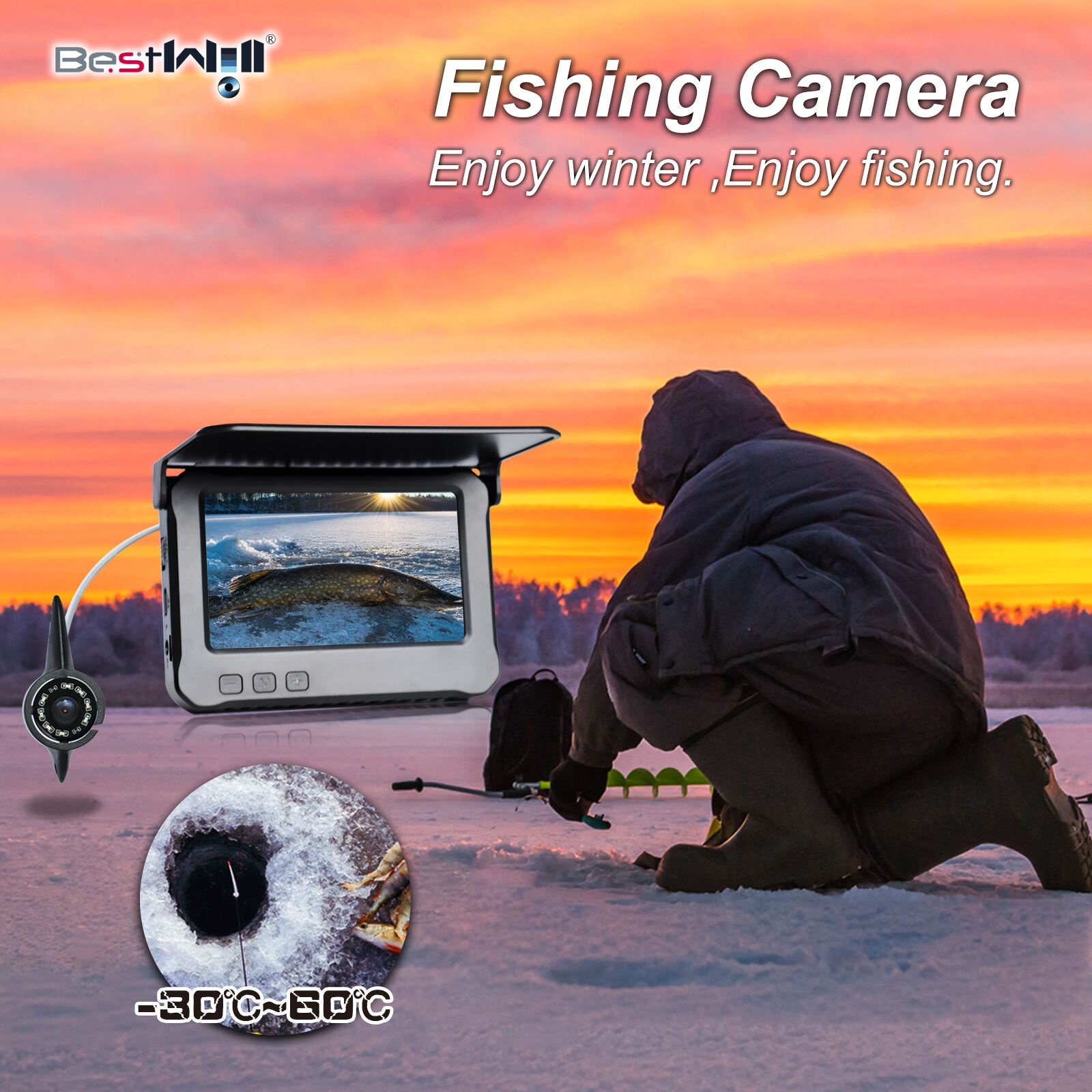How Night Vision Technology Enhances Underwater Fishing
The Science of Light Transmission in Water
Getting how light moves through water matters a lot when it comes to seeing things below the surface. Water actually grabs onto and bounces around light in ways that air doesn't, so what we see gets dimmer the deeper we go. That's why most underwater spots look blue or greenish blue to us. Blue and green colors travel better through water than other colors do, hence the common blue appearance of oceans and lakes. Fishermen have been using night vision gear for years now, and these devices work with both regular light and infrared light to help folks see better under water. The infrared part works pretty well even in cloudy or dirty water conditions, similar to what those fancy underwater fishing cameras use today. A recent paper from the Journal of Applied Physics showed that specific light wavelengths really boost visibility underwater, helping anglers catch more fish since they can finally see those critters hiding in the deep dark places where normal eyes just can't reach.

Overcoming Optical Distortion & Infrared Limitations
Underwater optical distortion remains a big problem because of how water bends light, making camera images look blurry and distorted. The latest night vision gear for underwater work, especially those wireless fishing cameras, now comes with better lenses such as aspheric designs plus special coatings that cut down reflections. All these tech upgrades help produce much sharper pictures even when conditions aren't ideal beneath the surface. Speaking of improvements, infrared tech has had its challenges since water tends to soak up infrared light pretty fast. But things are getting better all the time according to folks at the Marine Technology Society. They report that newer coatings on equipment combined with improved sensors are making infrared vision work much better underwater than before. Fishermen actually get clearer views and faster responses from their gear during real world fishing situations now.
Key Features of Top Wireless Underwater Fishing Cameras
High-Resolution Imaging for Precision Fishing
Good quality images make all the difference when it comes to precision fishing because they help anglers spot key details about fish sizes and types, which leads to better choices on the water. The best underwater cameras for fishing usually have high pixel counts plus smart image processing tech that gives crystal clear views of everything below the surface. Take models with either 4K or at least Full HD 1080p resolution for instance these deliver much sharper pictures so fishermen can actually see how fish are moving around and get a good look at the bottom structures too. Studies show that having access to clearer underwater visuals really does boost catch rates since anglers know exactly where to put their baits and which spots hold the most promise.

Waterproof Durability for Deep-Sea Adventures
For underwater cameras, especially those used in deep sea exploration, waterproof durability matters a lot. Models rated IP68 or similar can handle long periods underwater without issues, surviving submersion at different depths and fighting off damage from saltwater and debris. Manufacturers typically build these cameras with tough materials like reinforced polycarbonate or stainless steel components that last longer when exposed to rough ocean conditions. Many professional anglers swear by waterproof fishing cameras because they just plain work better when dropped into tough situations. A good waterproof rating means less worry about gear failure during critical moments on the boat. When fishing in remote areas where replacement parts aren't readily available, reliable equipment makes all the difference between catching fish and coming home empty handed.
Wireless Connectivity & Real-Time Monitoring
Underwater cameras with wireless tech bring some serious benefits for anglers looking to make their fishing trips easier and more mobile. No more getting tangled up in cables while trying to cast a line or check what's happening below the surface. The apps that come with these systems let folks monitor things in real time from their smartphones, which makes all the difference when trying to figure out where fish might be hiding. More and more fishermen are picking up these wireless options lately. Sales numbers have been climbing steadily over the past few years as people realize how much flexibility they offer compared to traditional setups. With remote controls for adjusting camera angles, live streaming directly to devices, and the ability to tweak tactics on the fly based on what's actually happening underwater, it's no wonder why so many anglers report better catches and overall satisfaction with their fishing adventures.
Incorporating these key features in wireless underwater fishing cameras can significantly elevate the fishing experience, making every expedition more productive and enjoyable.
Benefits of Portable Night Vision Fishing Cameras
Enhanced Visibility in Low-Light Conditions
Underwater fishing cameras equipped with night vision tech really shine when it comes to seeing what's going on beneath the surface during those dark hours. For folks who love night fishing, this feature makes all the difference since poor lighting conditions usually mess up their chances of catching anything worthwhile. Most modern models come packed with infrared sensors that let them see clearly even when there's practically no light at all. Fishermen who've tried these gadgets report better luck finding fish because they can actually spot where the action is happening under dim conditions. That's why so many serious nighttime anglers consider getting one of these handy devices essential gear for their next late evening adventure on the water.
Identifying Fish Behavior Patterns

Night vision fishing cameras give anglers a real edge when it comes to understanding how fish behave. These devices let folks watch what happens under water at night, something most people never get to see. Anglers report seeing totally different patterns depending on whether there's a full moon or not, which helps them plan better for their trips. The footage shows exactly where fish hang out and when they move around, so fishermen know where to cast their lines and what time of day works best. Many veteran anglers swear by this stuff after years on the water. One guy told me he started catching twice as many bass since he started using one of these cameras last season. Knowing what's going on below the surface really does make all the difference for anyone serious about fishing success.
Improved Safety During Night Expeditions
Night vision cameras really boost safety when heading out for night fishing trips. They help fishermen see where they're going in dark water conditions, which cuts down on accidents that happen because of poor visibility. According to some studies, there are fewer injuries reported among night anglers who use this tech, which shows why it matters so much for staying safe on the water. A lot of experienced fishermen will tell anyone who asks that having these cameras gives them extra confidence while out there after dark, since they know they won't run into hidden dangers without realizing it. For anyone planning a late evening catch session, getting a good night vision camera setup should be part of basic preparation work before hitting the lake or river at night.
Maximizing Night Vision Camera Performance
Optimal Camera Positioning Strategies
Getting the positioning right makes all the difference when it comes to getting good results from night vision cameras while fishing. Angles matter a lot here, along with how far away things are placed. A camera positioned just right at the correct angle will see much farther underwater and give anglers a better overall picture of what's going on below the surface. Some trial and error goes a long way in finding the sweet spot for any particular situation. What works great in one lake might not be so good in another due to differences in water clarity, depth, and fish behavior patterns.
Getting good results starts with knowing where you fish and what kind of fish are biting there. Most anglers find it works well to position their cameras so they can see across as much water as possible while still getting decent night vision. From what many experienced fishermen have found, angling the camera up just a bit tends to make things clearer since it picks up more reflections off the water surface. This trick actually helps quite a lot in different situations. For those really serious about their setup, checking out what some pros recommend or reading through detailed guides might give some extra ideas on how to arrange everything properly for better catches.
Balancing Infrared Lighting & Stealth
Getting the right mix between infrared lights and staying hidden matters a lot when using night vision gear around fish. Fish get really jumpy if there's too much light shining on them, but not enough light just makes everything look blurry and useless. Most good quality cameras these days come with stealth mode options that help strike this balance. Anglers who have spent time experimenting with different light intensities know that finding what works best takes some trial and error. The stealth features actually do a pretty decent job keeping things clear enough to see what's happening underwater without scaring off all the fish.
Old timers who've spent decades on the water will tell anyone willing to listen that lighting makes all the difference when conditions change and fish start acting differently. Lights with adjustable infrared settings are pretty handy for this exact reason they let anglers tweak brightness levels depending on what's going on below the surface, which tends to boost catches quite a bit. Most experienced fishermen suggest beginning with dimmer settings first then slowly cranking up the intensity until fish stop reacting to the light but still bite. Combine this technique with some basic knowledge about how certain species behave under various conditions and suddenly what was once frustrating becomes surprisingly productive.
Maintenance Tips for Saltwater Environments
Night vision cameras just don't last as long when they're used in saltwater settings. Saltwater eats away at electronic components over time, especially those metal parts inside the housing. Most anglers know this firsthand after their gear starts acting up after a few trips out on the water. A good habit to develop is giving all equipment a thorough rinse with freshwater right after coming back from saltwater use. This simple step removes most of the damaging salt buildup before it gets a chance to stick around. For serious users, investing in cameras built with stainless steel parts and waterproof housings makes sense too. These upgrades definitely pay off in the long run since they keep cameras working properly through many seasons of saltwater exposure.
Drying gear completely before putting it away is pretty much essential, along with giving it a good once over for rust spots or other damage. Most folks who spend time out at sea know that storing cameras somewhere temperature controlled and moisture free goes a long way toward keeping them working properly for years. Saltwater fishing crews swear by special cleaners made specifically for marine environments because regular stuff just doesn't cut it against the corrosive effects of seawater. An old timer I met down at the marina told me his underwater camera lasted three times longer after he started using those dedicated saltwater formulas instead of whatever was lying around the boat. The difference between occasional maintenance and regular care really shows up when looking at how long equipment stays functional versus getting tossed aside prematurely.
Choosing the Right Camera for Night Fishing Success
Depth Rating & Environment Compatibility
When picking out an underwater fishing camera, knowing about depth ratings and what kind of environment it works in matters a lot. The depth rating basically tells us how far down the camera can go without getting damaged. This becomes really important depending where someone fishes regularly. Take deep sea fishing for example most good quality cameras made for this purpose come with high depth ratings and special coatings or materials that resist rust and corrosion from saltwater exposure. On the flip side, if someone mostly fishes in lakes or rivers, they probably don't need all those fancy features since freshwater doesn't wear on equipment as badly. We're seeing more people gravitate toward versatile waterproof models these days because they work across so many different settings. Bottom line? Get something that matches what kind of waters you'll actually be using it in most often, otherwise it might end up sitting unused in storage pretty quickly.
Battery Life vs. Resolution Tradeoffs
Battery life and resolution work together in ways that really impact how well underwater fishing cameras perform. When cameras have high resolution, they capture amazing images that help anglers see exactly what fish are doing down there. The downside? These cameras eat through batteries much faster than lower resolution options. Most fishermen find themselves stuck between wanting crystal clear footage and not wanting to constantly swap out batteries mid-trip. A lot of folks actually turn down their camera's resolution when heading out for extended fishing sessions just so they don't run out of power halfway through. Take the popular GoFish Cam for example it delivers fantastic video quality but users often complain about how quickly it drains batteries. According to actual user reports, getting a model with replaceable batteries or one that has energy saving features makes all the difference in practice. These small upgrades let anglers spend more time fishing instead of worrying about charging stations.
Ergonomic Design for Ice Fishing Applications
When holding and using an underwater fishing camera during those long ice fishing sessions, comfort really matters. Cameras designed with ergonomics in mind make all the difference for anglers facing freezing conditions. These cameras typically have buttons placed where they can be reached easily, plus lighter frames so they don't feel like bricks after hours of use. Handles tend to be shaped just right for gloved hands too. Many ice fishers love models with textured grips that stay put even when wet, along with built-in heating to keep fingers from going numb. People who've used these better designed cameras report feeling less tired overall and actually getting more done while out on the ice. They spend less time wrestling with uncomfortable gear and more time enjoying what they came for – catching fish!


